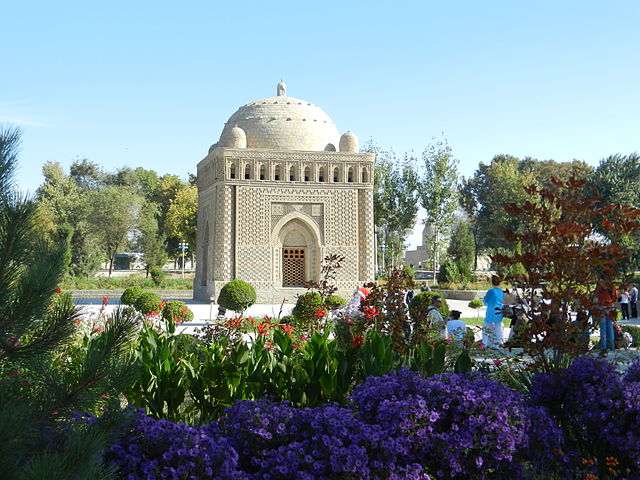Abū Ibrāhīm Ismā'īl ibn-i Aḥmad-i Sāmāni, better known simply as Ismail-i Samani, and also known as Isma'il ibn-i Ahmad, was the Samanid amir of Transoxiana (892–907) and Khorasan (900–907). His reign saw the emergence of the Samanids as a powerful force. He was the son of Ahmad ibn-i Asad and a descendant of Saman Khuda, the eponymous ancestor of the Samanid dynasty who renounced Zoroastrianism and embraced Islam.
Coinage of Isma'il ibn Ahmad, Usrushana mint. Dated AH 280 (893-4 CE).
Picture of the Samanid Mausoleum, the burial site of Ismail.
The Samanid Empire, also known as the Samanian Empire, Samanid dynasty, Samanid amirate, or simply as the Samanids, was a Persianate Sunni Muslim empire, of Iranian dehqan origin. The empire was centred in Khorasan and Transoxiana; at its greatest extent encompassing Persia and Central Asia, from 819 to 999.
Early 14th century copy of the Samanid-period Tarikhnama of Bal'ami (d. 992–997 CE) depicting al-Saffah (r. 750–754) as he receives pledges of allegiance in Kufa. This is the earliest known extant prose book in the Persian language.
Picture of the Samanid Mausoleum, the burial site of Ismail Samani.
Coin of Nasr II, minted in Nishapur (933/4).
“Battle Between Abu’l-Qasim and the Samanid Muntasir”, 14th century illustration.





